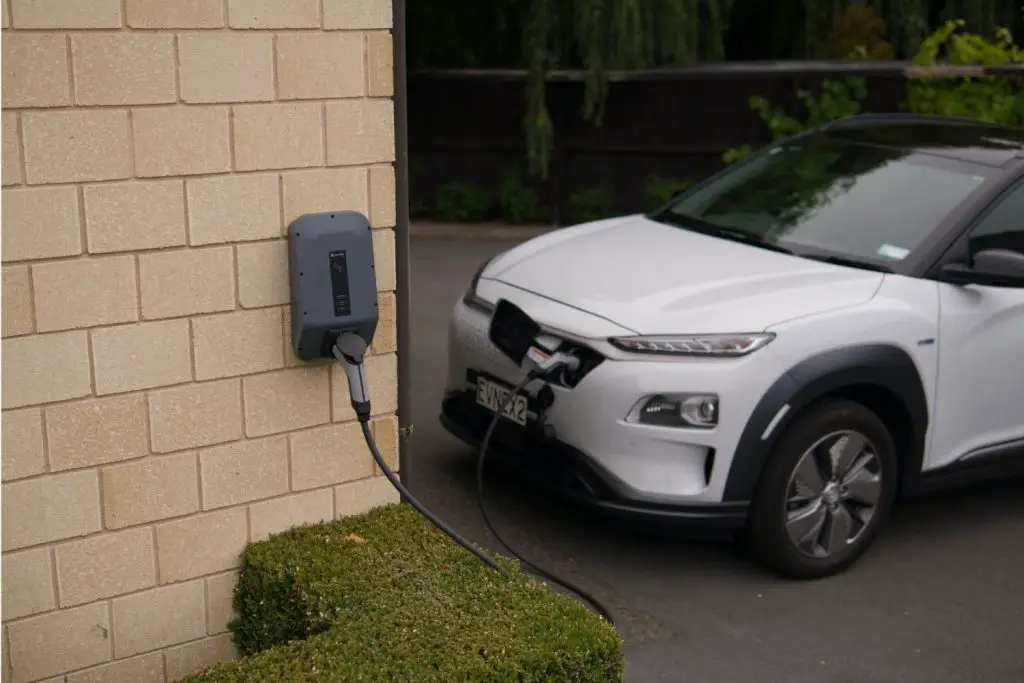Alternators, for years, have been a staple in the maintenance program of combustion engine cars. Without an alternator, you quickly lose power as the battery drains. It also is a component that needs replaced every once in a while (thankfully they aren’t that expensive). However, with the growing trend of electric vehicles (from tons of different brands), you might be wondering why electric vehicles do not have alternators?
How does an alternator work?
Before we get too far into this article, we should first address what an alternator is, and does!
An alternator is a type of electrical generator that converts mechanical energy into electrical energy. The basic principle behind alternators is simple: they use rotating electromagnets to create a current in a wire conductor. When the conductor cuts through the magnetic field, an electric current is induced in the conductor. This current can then be used to power and charge up electrical devices, such as batteries. This rotation is created by the gas powered engine.
Alternators are used in a wide range of applications, from powering car engines to generating electricity in power plants. As long as there is a source of mechanical energy, an alternator can be used to generate electricity.
Why would an electric vehicle not need an alternator to run?
Electric vehicles are powered by large batteries (rather than a smaller battery you see in ICE vehicles), which store energy and give out that energy when the vehicle needs it. This battery is charged up while you are at home, at a charge station (including a supercharger). This energy is then depleted over time as the vehicle needs it for moving forward, making the A/C work and more.
In contrast, traditional gasoline-powered vehicles rely on an engine to convert chemical energy into mechanical energy, which is then used to turn the wheels. For the most part, an internal combustion vehicle only needs small amounts of electricity, that allows for a smaller battery that quickly expels energy to start the vehicle (small amounts are also needed for sound systems, A/C, etc).
Because of the small battery, it needs an alternator to keep that battery charged all the way up to keep things running. Meanwhile, and electric vehicle has a massive battery that can last for miles and miles in between charges, so an alternator doesn’t make much sense.
Would an alternator give electric vehicles unlimited energy?
The demand for electric vehicles is growing every day, as people become more aware of the environmental damage caused by gasoline-powered cars. Electric vehicles are powered by batteries, which store energy that can be used to run the vehicle’s motors.
However, batteries have a limited capacity and must be recharged periodically. Some have suggested that electric vehicles could be powered by an alternator, which would theoretically provide unlimited energy. However, there are several challenges associated with this idea.
First, alternators are not very efficient, and it is unclear whether they would be able to provide enough power to keep an electric vehicle running indefinitely.
Second, Alternators also require a constant supply of fuel, which would need to be replenished regularly. Finally, alternators produce a lot of noise, which would make driving an electric car powered by one quite unpleasant. For these reasons, it is unlikely that alternators will ever be used to power electric vehicles on a large scale.

What is regenerative braking?
In a traditional braking system, friction is used to slow down the wheels of a vehicle. This process generates a great deal of heat, which can lead to wear and tear on the brakes. In contrast, regenerative braking is a much more efficient method of slowing down a vehicle.
Rather than using friction, regenerative braking relies on the principle of electromagnetic induction. When the brakes are applied, an electric field is generated that slows down the rotation of the wheels. This process generates electricity, which can be used to power the vehicle’s lights or other electrical systems.
Regenerative braking systems are common in hybrid and electric vehicles, and they can significantly extend the life of the brakes.
Conclusion
Electric vehicles are powered by batteries, which store energy in the form of electricity. In contrast, traditional gasoline-powered vehicles rely on an engine to convert chemical energy into mechanical energy, which is then used to turn the wheels. As a result, electric vehicles are much simpler in terms of their design and operation.
One key difference is that they do not need an alternator to run. Alternators are used in gasoline-powered vehicles to recharge the battery, but this is not necessary for electric vehicles since the battery can be recharged simply by plugging it into an outlet.





